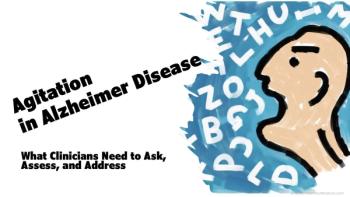
Increase in Barriers to Reproductive Health Care Seen Disproportionately Among Historically Disadvantaged
Survey respondents facing the greatest increase in barriers to desired care were aged 25 to 29 years, identified as Hispanic, and lived below 100% of the federal poverty level.
The proportion of reproductive-aged women who reported a barrier to desired reproductive health care services increased from 2017 to 2021, as did the number of barriers to care they experienced, according to new research. The largest increase in barriers to access, study authors observed, was disproportionately among individuals from historically underserved populations.
The study was published online April 10, 2023, in the journal JAMA Network Open.
“The objective of our study was to describe changes in barriers and access to a broad spectrum of reproductive health services from individuals’ perspectives using serial, nationally representative, cross-sectional surveys fielded in August 2017 and December 2021,” Aliza Adler, an MPH candidate in the division of maternal, adolescent and child health at the School of Public Health at the University of California, Berkeley, and colleagues wrote.
“We hypothesized that due to factors such as COVID-19 and increasing federal restrictions on reproduction health services, barriers to reproductive health services would increase over this period, with historically marginalized groups, including minoritized racial and ethnic groups and individuals with lower incomes, experiencing the greatest impact.”
Adler and colleagues conducted a cross sectional study using serial survey data collected in August 2017 and December 2021 from 29 496 adults aged 18 to 49 years who are members of the online Ipsos KnowledgePanel. Surveys asked questions about reproductive health care experience and participant opinions. The researchers’ primary outcome of interest was the number and type of barriers to receiving reproductive services in the past 3 years (2014-2017 and 2018-2021)
A total of 7022 participants (mean age 33.9 years) completed the surveys in 2017 and 6841 participants (mean age 34.2 years) did so in 2021. Of the 12 351 (89%) of respondents who reported ever accessing reproductive health services, the racial/ethnic composition was:
- White 58.2%
- Hispanic 19.1%
- Black 13.7%
- Asian/Pacific Islander 5.5%
- Multiracial/other race/ethnicity 3.5%
The majority in 2021 identified as heterosexual (no data were available for 2017).
Data were weighted to be nationally representative, the authors reported, and the distribution of covariates was “largely similar” between the survey years.
FINDINGS
In bivariable analysis, the investigators found a significant increase between 2017 and 2021 in the frequency of respondents experiencing a given barrier, except for 2 of them: difficulty paying for reproductive health services, which decreased significantly (–1.9%; P=.046) and finding a physician or clinic that accepts one’s insurance, which was unchanged (0.9%; P=.33).
More respondents reported experiencing ≥3 barriers in 2021 than in 2017 (18.6% vs. 16.1%; P=.008) and significantly more participants reported experiencing at least 1 barrier in 2021 vs 2017 (44.8% vs 40.5%; P=.001).
In multivariable analysis, the investigators found the weighted mean number of barriers increased significantly between the 2 survey periods, from 1.09 (95% CI, 1.02-1.14) in 2017 to 1.29 (95% CI, 1.22-1.37) in 2021 (P<.001).
Between 2017 and 2021, Adler et al reported the largest increase in participants reporting a given barrier was for finding a physician or clinic where they felt comfortable, with 19.9% reporting the barrier in 2017 and 24.8% reporting it in 2021 (difference, 4.9%; 95% CI, 4.7%-5.2%; P<.001).
Identifying respondent subgroups that experienced the greatest increases in the mean number of barriers faced between the 2 surveys revealed those aged 25 to 29 years (n = 960), those who identified as Hispanic (n = 1,199), those with no high school diploma (n = 238), who lived below 100% of the federal poverty level (n = 1,045) or took the survey in Spanish (n = 520).
"Our findings suggest that barriers to reproductive health services were pervasive and disproportionately associated with reduced access for individuals identifying with historically marginalized groups in both 2017 and 2021,” the investigators wrote.
And, while their survey could not identify specific reasons for the increase in barriers between the 2 survey years, the authors point to “several notable changes in the landscape toward reproductive health care and health care in general, during this period, including the onset of the COVID-19 pandemic in spring 2020 and significant reductions in the number of Title X family planning clinics in 2019.”
Reference: Adler A, Biggs MA, Kaller S, Schroeder R, Ralph L.
Newsletter
Enhance your clinical practice with the Patient Care newsletter, offering the latest evidence-based guidelines, diagnostic insights, and treatment strategies for primary care physicians.
































































































































































































































































































